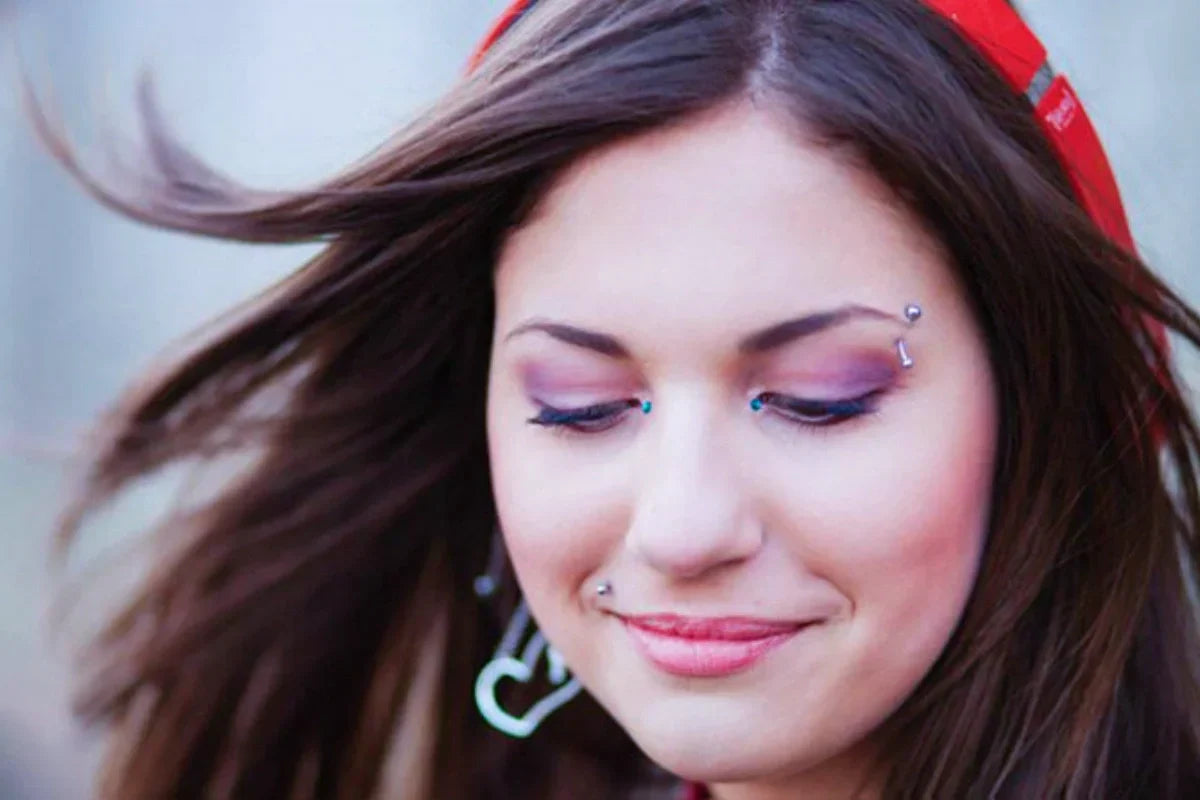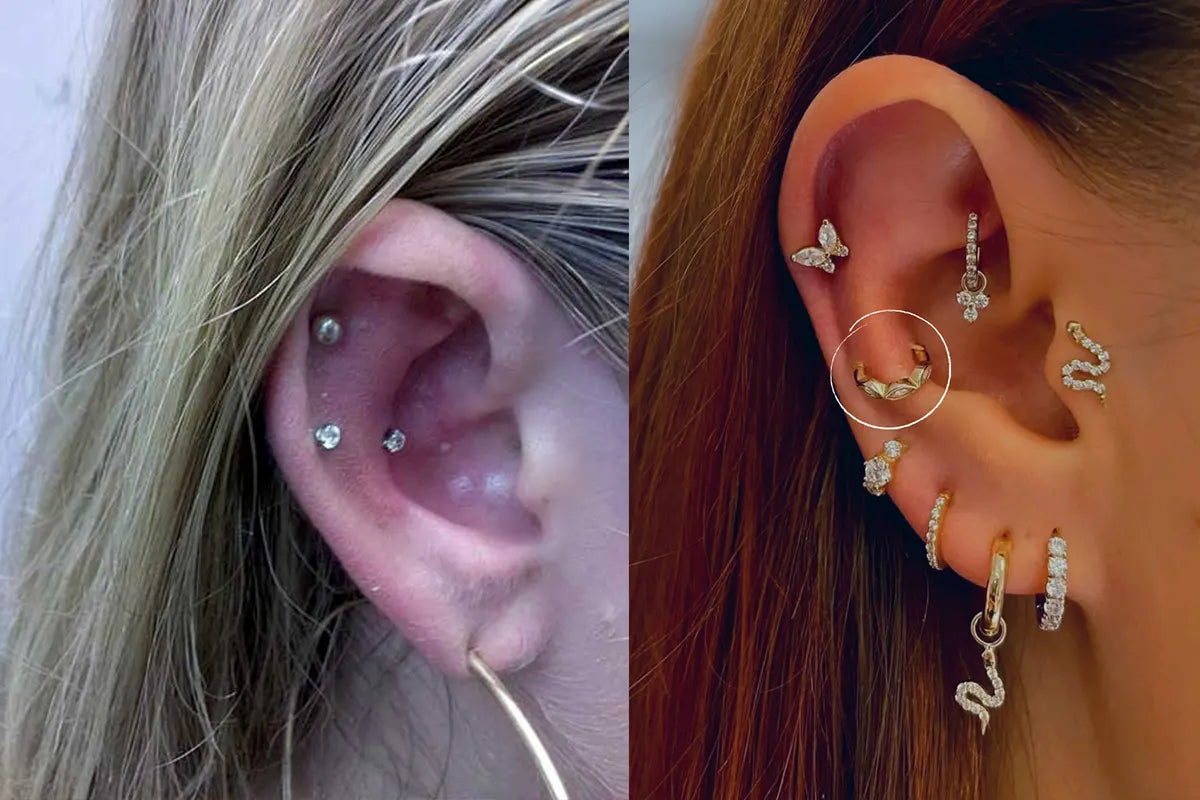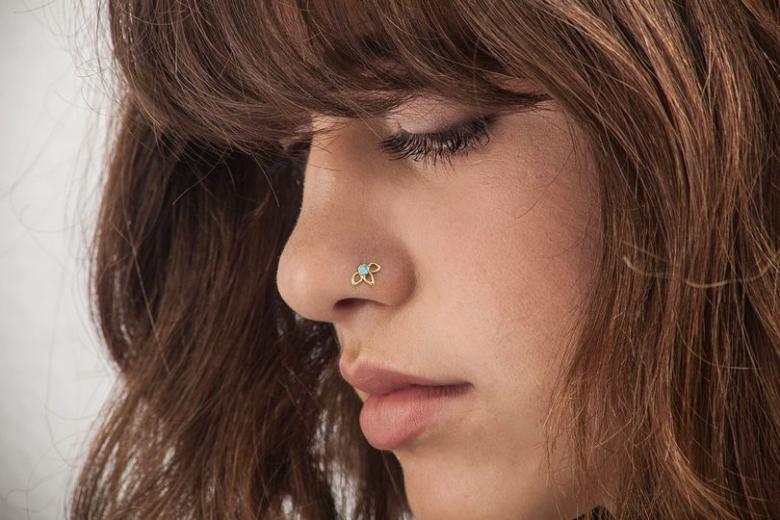Snug piercings, often regarded as one of the most painful types of ear piercings, have gained significant popularity among body jewelry enthusiasts. This guide will help you understand everything about snug piercings, from the placement to healing, and even offer tips on jewelry selection and aftercare.
What is a Snug Piercing?
The snug piercing, also known as the anti-helix piercing, is a horizontal piercing that goes through the inner ridge of cartilage, specifically the anti-helix, located just above the ear canal and below the ear rim. Unlike more common piercings like the auricle or rook, the snug piercing is distinct because both the entry and exit points are visible on the front of the ear, giving it a clean, minimalist look from various angles.
Snug Piercing Anatomy & Placement: Finding the Perfect Spot
To find the right spot for a snug piercing, begin at your earlobe and feel for a triangular cartilage piece called the antitragus. Follow along its outline, and you'll notice a parallel cartilage line along the ear's outer edge—this is the anti-helix, where the snug piercing is placed.
Not everyone is a suitable candidate for a snug piercing. Individuals with flat or tight ear cartilage may not have the necessary depth for a safe and comfortable snug piercing. To determine if you're a good candidate, check if your ear has a well-defined helix ridge with enough space to accommodate the piercing.
The Pain Factor: Is a Snug Piercing Really That Painful?
Snug piercings are often considered one of the more painful cartilage piercings, earning a pain rating of 8 to 9 out of 10 for many. The discomfort comes from the dense and less flexible cartilage, which makes the process more intense. The initial needle insertion can feel like a sharp prick, followed by swelling as the jewelry is inserted. While the pain is temporary, it's important to stay relaxed and take deep breaths during the procedure.
How Long Does it Take for a Snug Piercing to Heal?
Healing a snug piercing can take anywhere from 4 to 12 months, which is longer than many other types of piercings. Here’s what you can expect during the healing process:
-
Week 1-2: Swelling, redness, and throbbing
-
Week 3-6: Tenderness reduces, but the piercing remains fragile
-
Month 2-4: Outer healing begins
-
Month 4-6: Deep healing stage
-
Month 6-12: Full internal healing
It’s important to note that even if the piercing looks healed on the surface, the inner cartilage may still need time to fully heal. Avoid changing jewelry until the piercing has been properly evaluated by your piercer.
Essential Aftercare Tips for Snug Piercings
Taking proper care of your snug piercing is crucial to avoid complications like lumps, scarring, and prolonged healing. Follow these essential aftercare guidelines:
-
Clean regularly: Use saline solution twice daily to keep the piercing clean. Avoid rotating or moving the jewelry while cleaning. Pat dry with a clean paper towel.
-
Protect from friction: Avoid sleeping on your pierced ear and use a travel pillow or donut pillow to protect the piercing while sleeping. Also, refrain from wearing tight hats or over-ear headphones during healing.
-
Avoid harsh chemicals: Shampoo, conditioner, hairspray, and other skin products can irritate your piercing. Cover your ears while showering to keep these chemicals away.
-
Watch for complications: Mild swelling and clear discharge are normal, but if you notice yellow/green pus, severe pain, or sudden swelling, consult your piercer or a healthcare professional.
Jewelry Options for Snug Piercings
Once your snug piercing has healed, you can explore different jewelry styles. Small curved barbells are ideal for snug piercings due to their ability to comfortably follow the natural shape of your ear. For a more eye-catching look, consider larger barbells or captive bead rings. Jewelry made from high-quality materials like titanium, 14k gold, or implant-grade steel will provide a better fit and reduce the risk of irritation.
Cartilage Bumps and Healing: What You Need to Know
Cartilage bumps are a common issue with snug piercings, and they are generally a natural response of the body to trauma or irritation. These bumps are usually hypertrophic scars, not infections, and they often subside with proper aftercare. Avoid using harsh disinfectants like alcohol or iodine, which can worsen the bump. Most bumps will heal naturally if the piercing is not overly irritated.
Cost of a Snug Piercing: What to Expect
The cost of a snug piercing typically ranges from $40 to $90, depending on the piercer's experience and location. Since snug piercings are more complex, it’s important to choose a skilled piercer to avoid complications. A reputable piercer will ensure the procedure is done correctly and that the jewelry is inserted at the right angle.
Conclusion: Is a Snug Piercing Right for You?
A snug piercing is a bold and unique addition to your body jewelry collection. While it comes with some pain and a lengthy healing process, it offers a striking appearance that many find irresistible. By following proper aftercare and choosing high-quality jewelry, you can enjoy this piercing for years to come. Just make sure you're a suitable candidate, and be prepared for a healing period that requires patience and care.




Leave a comment
All comments are moderated before being published.
This site is protected by hCaptcha and the hCaptcha Privacy Policy and Terms of Service apply.